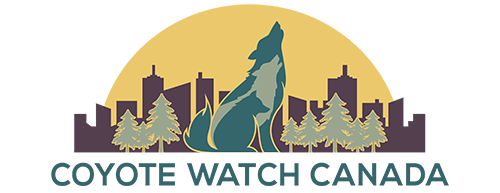
More thoughts from the field by Rick Lamplugh’s Coyote Watch.
Living and volunteering at Yellowstone’s Lamar Buffalo Ranch, Mary and I always ask visitors, “What animals have you seen today?” Sometimes the answer—tinged with disappointment—is “Just a coyote.” But such a dismissal misses something important: That visitor saw a coyote living in a fully protected, intact, natural ecosystem, an animal free to live as its ancestors did before settlers arrived and declared war on coyotes and other predators.
In Yellowstone, free from human hunters, coyotes live in packs with up to seven members. Like a wolf pack, each has an alpha male, alpha female, and pups from previous litters. Old timers here tell me that before wolves were reintroduced, they saw coyotes travel and hunt in such packs. But they say that since the return of wolves, coyotes travel in singles and pair—like the coyote gnawing a leg bone that Mary captured in the post photo. And their keeping a low profile makes sense: forty percent of the deaths of adult coyotes come at the teeth of wolves.
But at night when packs reunite, I’ve heard howling from large choruses filled with many beautiful voices. That howling thrills me and explains why the coyote is called “song dog.”
When we see or hear just a coyote in Yellowstone, we’re experiencing an indicator of a healthy ecosystem, a wild place with a social, long-lived, and stable coyote population.
Unfortunately, living with coyotes forced to share our unhealthy ecosystems has corrupted our perspective of the song dog. A coyote living in a metropolis like L.A., for example, will avoid howling for fear of being discovered. It may shun living in a pack in order to keep the lowest possible profile. It will drink from swimming pools and eat anything from garbage to rats to small pets. It may attack a human because it has lost fear of us.
Never the less, those city dwelling coyotes are intelligent survivors that have adapted to living with humans. But at a price: Unhealthy ecosystems take their toll on song dogs just as they do on humans. The average life span for a coyote is six years, but in a healthy ecosystem like Yellowstone—even with death-dealing competitors like wolves and mountain lions—a coyote can live up to thirteen years.
I try to keep all this in mind as I watch a coyote saunter along the plowed road in front of the ranch, or mark its territory on a cottonwood, or raise its head and howl to a mate, or dive nose first into the snow to catch a vole. That animal, that just a coyote, is doing what coyotes have done for millennia. And those simple acts tell me that both of us are living in the healthiest place possible.
For more stories about coyotes and the ecology of the Lamar Valley, “Look Inside” my new, best selling book, In the Temple of Wolves, available on Amazon as a paperback or eBook at http://amzn.to/Jpea9Q

